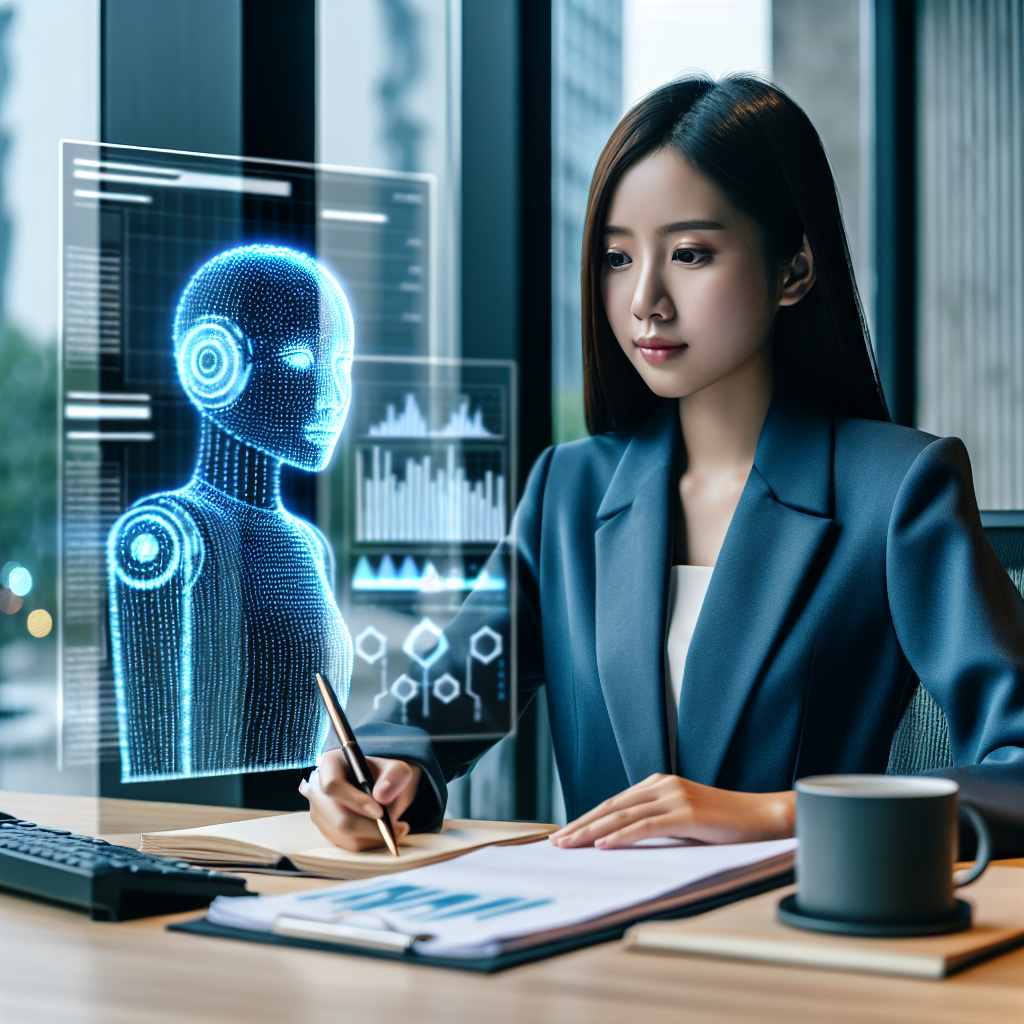The video discusses the issue of deforestation in Mozambique and highlights a project that aims to restore the forests to their natural diversity. Mozambique has been experiencing rapid deforestation, primarily due to the clearing of trees for farmland and unsustainable commercial logging of protected species. However, this project is working with villages near Chimanimani National Park to reverse this trend.
The project recognizes the importance of forests in providing various ecological benefits, such as regulating the climate, preserving biodiversity, and supporting local communities. By involving local communities in the restoration efforts, the project aims to create a sense of ownership and responsibility among the villagers. This approach is crucial for the long-term success of the project.
The video emphasizes the need for sustainable land use practices and the importance of protecting forests for future generations. It also highlights the potential for regaining the forests that once existed in Mozambique. Through reforestation and conservation efforts, it is possible to restore the natural beauty and diversity of the forests.
The project’s success depends on the collaboration between various stakeholders, including government agencies, non-profit organizations, and local communities. By working together, they can implement effective strategies to combat deforestation and promote sustainable forest management.
In conclusion, the video sheds light on the alarming rate of deforestation in Mozambique and the efforts being made to reverse this trend. It emphasizes the importance of forests and the potential for restoring them to their former glory. By involving local communities and implementing sustainable land use practices, it is possible to regain the forests that once thrived in Mozambique.
Original news source: ‘It’s possible to regain the forest we once had’ (BBC)
🎧 Listen:
Slow
Normal
Fast
📖 Vocabulary:
| 1 | deforestation | The process of clearing forests, often resulting in damage to the environment |
| 2 | biodiversity | The variety of plant and animal life in a particular habitat |
| 3 | unsustainable | Not able to be maintained at the current rate or level |
| 4 | ecological | Relating to the relationships between living organisms and their environment |
| 5 | reforestation | The process of replanting trees in an area where the forest has been depleted |
| 6 | conservation | The protection and preservation of natural resources |
| 7 | stakeholders | Individuals or groups with an interest or concern in a particular issue |
| 8 | alarming | Causing worry or fear due to its severity or seriousness |
| 9 | collaboration | Working together with others to achieve a common goal |
| 10 | implementing | Putting a plan or decision into effect |
| 11 | combat | To take action to reduce or prevent something undesirable |
| 12 | potential | The capacity to develop into something in the future |
| 13 | preserving | Maintaining something in its original or existing state |
| 14 | diversity | The state of having a range of different things |
| 15 | restoration | The act of returning something to its original condition |
Group or Classroom Activities
Warm-up Activities:
– News Summary
Instructions: Have students watch the video and then write a summary of the main points discussed. Encourage them to include key details and facts about deforestation in Mozambique, the project to restore the forests, and the importance of involving local communities.
– Opinion Poll
Instructions: Divide the class into pairs or small groups. Have each group come up with a list of questions related to deforestation and the restoration project in Mozambique. Then, have them take turns asking and answering the questions within their group. Afterwards, have a class discussion where groups share their findings and opinions.
– Vocabulary Pictionary
Instructions: Prepare a list of vocabulary words related to deforestation and restoration. Divide the class into teams. Give each team a word and have them draw a picture that represents the word. The other teams must guess the word based on the drawing. Encourage students to use their knowledge of the video and the topic to come up with accurate drawings.
– Speed Summarizing
Instructions: Divide the class into pairs. Have one student summarize the video in one minute or less, while the other student listens. Then, have them switch roles. Encourage students to focus on the main points and key details. After each round, have pairs discuss any differences or similarities in their summaries.
– Pros and Cons
Instructions: Divide the class into two groups. Assign one group to argue the pros of deforestation in Mozambique, while the other group argues the cons. Give students time to research and gather evidence to support their arguments. Then, have a debate where each group presents their arguments. Encourage students to use critical thinking and persuasive language.
🤔 Comprehension Questions:
1. What are the primary causes of deforestation in Mozambique?
2. How is the project working to involve local communities in the restoration efforts?
3. What are some ecological benefits provided by forests?
4. Why is involving local communities crucial for the long-term success of the project?
5. What is the importance of sustainable land use practices?
6. Who are the various stakeholders involved in the project?
7. What are some strategies that can be implemented to combat deforestation?
8. What is the potential for restoring the forests in Mozambique?
Go to answers ⇩
🎧✍️ Listen and Fill in the Gaps:
The video discusses the issue of (1)______ in Mozambique and highlights a (2)______ that aims to restore the (3)______ to their natural (4)______. Mozambique has been experiencing rapid deforestation, primarily due to the clearing of trees for farmland and unsustainable commercial logging of protected species. However, this project is working with villages near Chimanimani National Park to reverse this trend.
The project recognizes the importance of forests in providing various ecological benefits, such as regulating the climate, preserving (5)______, and supporting (6)______ communities. By involving local communities in the restoration efforts, the project aims to create a sense of ownership and responsibility among the villagers. This approach is crucial for the long-term success of the project.
The video (7)______ the need for sustainable land use practices and the (8)______ of protecting forests for future generations. It also highlights the potential for regaining the forests that once existed in Mozambique. Through reforestation and conservation efforts, it is possible to (9)______ the (10)______ beauty and diversity of the forests.
The project’s success depends on the (11)______ between various stakeholders, including government agencies, non-profit organizations, and local (12)______. By working together, they can implement effective strategies to combat deforestation and promote (13)______ forest management.
In conclusion, the video sheds light on the alarming rate of deforestation in Mozambique and the efforts being made to reverse this (14)______. It emphasizes the importance of forests and the potential for restoring them to their former glory. By (15)______ local communities and implementing sustainable land use (16)______, it is possible to regain the forests that once thrived in Mozambique.
Go to answers ⇩
💬 Discussion Questions:
Students can ask a partner these questions, or discuss them as a group.
1. What is the main cause of deforestation in Mozambique?
2. How would you feel if your local forest was being destroyed for farmland?
3. Do you think involving local communities in restoration efforts is an effective strategy? Why or why not?
4. What are some potential ecological benefits of forests?
5. How do you think deforestation affects biodiversity?
6. Do you like the idea of sustainable land use practices? Why or why not?
7. What role do you think government agencies should play in combating deforestation?
8. How do you think non-profit organizations can contribute to reforestation efforts?
9. Why do you think local communities should have a sense of ownership and responsibility for the forests?
10. How would you feel if you were part of a project working to restore a forest?
11. What do you think are some challenges in implementing effective strategies to combat deforestation?
12. Do you think it is possible to restore the natural beauty and diversity of the forests in Mozambique? Why or why not?
13. How do you think climate regulation is affected by deforestation?
14. Have you ever witnessed deforestation in your own country? How did it make you feel?
15. What do you think are some long-term benefits of sustainable forest management?
Individual Activities
📖💭 Vocabulary Meanings:
Match each word to its meaning.
Words:
1. deforestation
2. biodiversity
3. unsustainable
4. ecological
5. reforestation
6. conservation
7. stakeholders
8. alarming
9. collaboration
10. implementing
11. combat
12. potential
13. preserving
14. diversity
15. restoration
Meanings:
(A) The process of clearing forests, often resulting in damage to the environment
(B) To take action to reduce or prevent something undesirable
(C) Putting a plan or decision into effect
(D) The act of returning something to its original condition
(E) The protection and preservation of natural resources
(F) Individuals or groups with an interest or concern in a particular issue
(G) Not able to be maintained at the current rate or level
(H) The capacity to develop into something in the future
(I) The variety of plant and animal life in a particular habitat
(J) The process of replanting trees in an area where the forest has been depleted
(K) Relating to the relationships between living organisms and their environment
(L) Maintaining something in its original or existing state
(M) The state of having a range of different things
(N) Causing worry or fear due to its severity or seriousness
(O) Working together with others to achieve a common goal
Go to answers ⇩
🔡 Multiple Choice Questions:
1. What is the primary cause of deforestation in Mozambique?
(a) Natural disasters
(b) Urbanization
(c) Clearing of trees for farmland and unsustainable commercial logging
(d) Climate change
2. What are some ecological benefits provided by forests?
(a) Creating jobs, reducing pollution, and generating renewable energy
(b) Regulating the climate, preserving biodiversity, and supporting local communities
(c) Providing food, shelter, and medicine for local communities
(d) Preventing erosion, purifying water, and sequestering carbon
3. What is the approach taken by the project to restore the forests in Mozambique?
(a) Implementing strict government regulations
(b) Importing trees from other countries
(c) Focusing on commercial logging of protected species
(d) Involving local communities in the restoration efforts
4. Why is involving local communities important for the long-term success of the project?
(a) It provides job opportunities for the local communities
(b) It ensures government support for the project
(c) It guarantees financial resources for the project
(d) It creates a sense of ownership and responsibility among the villagers
5. What does the video emphasize about land use practices?
(a) They need to be sustainable
(b) They need to prioritize economic development over environmental conservation
(c) They need to focus on urbanization
(d) They need to be regulated by international organizations
6. What stakeholders are involved in the project?
(a) Government agencies, non-profit organizations, and local communities
(b) International corporations, local businesses, and tourists
(c) Farmers, loggers, and environmental activists
(d) Scientists, researchers, and academics
7. What is the potential for restoring the forests in Mozambique?
(a) It is impossible due to the extent of deforestation
(b) It is uncertain and depends on external funding
(c) It is possible through reforestation and conservation efforts
(d) It is unnecessary as other ecosystems can compensate for the loss of forests
8. What is the main message of the video?
(a) The project has successfully restored the forests in Mozambique
(b) Deforestation in Mozambique is a pressing issue that needs to be addressed
(c) Local communities are solely responsible for deforestation in Mozambique
(d) The government should take full control of forest management in Mozambique
Go to answers ⇩
🕵️ True or False Questions:
1. Deforestation in Mozambique is primarily due to clearing trees for farmland and unsustainable commercial logging.
2. The project’s success does not depend on collaboration between government agencies, non-profit organizations, and local communities.
3. The video discusses the issue of deforestation in Mozambique.
4. The project aims to create a sense of ownership and responsibility among the villagers.
5. The project is not working with villages near Chimanimani National Park.
6. The project aims to restore the forests to their natural diversity.
7. The video de-emphasizes the need for sustainable land use practices and protecting forests for future generations.
8. The project does not recognize the importance of forests in providing ecological benefits.
Go to answers ⇩
📝 Write a Summary:
Write a summary of this news article in two sentences.
Check your writing now with the best free AI for English writing!
Writing Questions:
Answer the following questions. Write as much as you can for each answer.
Check your answers with our free English writing assistant!
1. What are the main causes of deforestation in Mozambique?
2. How does involving local communities in restoration efforts contribute to the success of the project?
3. What are some of the ecological benefits provided by forests?
4. Who are the key stakeholders involved in the project to combat deforestation?
5. What are the potential outcomes of reforestation and conservation efforts in Mozambique?
✅ Answers
🤔✅ Comprehension Question Answers:
1. What are the primary causes of deforestation in Mozambique?
The primary causes of deforestation in Mozambique are the clearing of trees for farmland and unsustainable commercial logging of protected species.
2. How is the project working to involve local communities in the restoration efforts?
The project is working with villages near Chimanimani National Park to involve local communities in the restoration efforts. This is done to create a sense of ownership and responsibility among the villagers.
3. What are some ecological benefits provided by forests?
Forests provide various ecological benefits, such as regulating the climate, preserving biodiversity, and supporting local communities.
4. Why is involving local communities crucial for the long-term success of the project?
Involving local communities is crucial for the long-term success of the project because it creates a sense of ownership and responsibility among the villagers. This helps ensure the sustainability and continued care of the restored forests.
5. What is the importance of sustainable land use practices?
Sustainable land use practices are important because they ensure the long-term health and productivity of the land. They help prevent deforestation and promote responsible use of natural resources.
6. Who are the various stakeholders involved in the project?
The various stakeholders involved in the project include government agencies, non-profit organizations, and local communities.
7. What are some strategies that can be implemented to combat deforestation?
Some strategies that can be implemented to combat deforestation include promoting sustainable land use practices, enforcing protected area regulations, providing alternative livelihood options for local communities, and raising awareness about the importance of forests.
8. What is the potential for restoring the forests in Mozambique?
The potential for restoring the forests in Mozambique is high, as shown by the project’s efforts to involve local communities and implement sustainable land use practices. With the collaboration of various stakeholders, it is possible to regain the forests that once thrived in Mozambique.
Go back to questions ⇧
🎧✍️✅ Listen and Fill in the Gaps Answers:
(1) deforestation
(2) project
(3) forests
(4) diversity
(5) biodiversity
(6) local
(7) emphasizes
(8) importance
(9) restore
(10) natural
(11) collaboration
(12) communities
(13) sustainable
(14) trend
(15) involving
(16) practices
Go back to questions ⇧
📖💭✅ Vocabulary Meanings Answers:
1. deforestation
Answer: (A) The process of clearing forests, often resulting in damage to the environment
2. biodiversity
Answer: (I) The variety of plant and animal life in a particular habitat
3. unsustainable
Answer: (G) Not able to be maintained at the current rate or level
4. ecological
Answer: (K) Relating to the relationships between living organisms and their environment
5. reforestation
Answer: (J) The process of replanting trees in an area where the forest has been depleted
6. conservation
Answer: (E) The protection and preservation of natural resources
7. stakeholders
Answer: (F) Individuals or groups with an interest or concern in a particular issue
8. alarming
Answer: (N) Causing worry or fear due to its severity or seriousness
9. collaboration
Answer: (O) Working together with others to achieve a common goal
10. implementing
Answer: (C) Putting a plan or decision into effect
11. combat
Answer: (B) To take action to reduce or prevent something undesirable
12. potential
Answer: (H) The capacity to develop into something in the future
13. preserving
Answer: (L) Maintaining something in its original or existing state
14. diversity
Answer: (M) The state of having a range of different things
15. restoration
Answer: (D) The act of returning something to its original condition
Go back to questions ⇧
🔡✅ Multiple Choice Answers:
1. What is the primary cause of deforestation in Mozambique?
Answer: (c) Clearing of trees for farmland and unsustainable commercial logging
2. What are some ecological benefits provided by forests?
Answer: (b) Regulating the climate, preserving biodiversity, and supporting local communities
3. What is the approach taken by the project to restore the forests in Mozambique?
Answer: (d) Involving local communities in the restoration efforts
4. Why is involving local communities important for the long-term success of the project?
Answer: (d) It creates a sense of ownership and responsibility among the villagers
5. What does the video emphasize about land use practices?
Answer: (a) They need to be sustainable
6. What stakeholders are involved in the project?
Answer: (a) Government agencies, non-profit organizations, and local communities
7. What is the potential for restoring the forests in Mozambique?
Answer: (c) It is possible through reforestation and conservation efforts
8. What is the main message of the video?
Answer: (b) Deforestation in Mozambique is a pressing issue that needs to be addressed
Go back to questions ⇧
🕵️✅ True or False Answers:
1. Deforestation in Mozambique is primarily due to clearing trees for farmland and unsustainable commercial logging. (Answer: True)
2. The project’s success does not depend on collaboration between government agencies, non-profit organizations, and local communities. (Answer: False)
3. The video discusses the issue of deforestation in Mozambique. (Answer: True)
4. The project aims to create a sense of ownership and responsibility among the villagers. (Answer: True)
5. The project is not working with villages near Chimanimani National Park. (Answer: False)
6. The project aims to restore the forests to their natural diversity. (Answer: True)
7. The video de-emphasizes the need for sustainable land use practices and protecting forests for future generations. (Answer: False)
8. The project does not recognize the importance of forests in providing ecological benefits. (Answer: False)
Go back to questions ⇧













